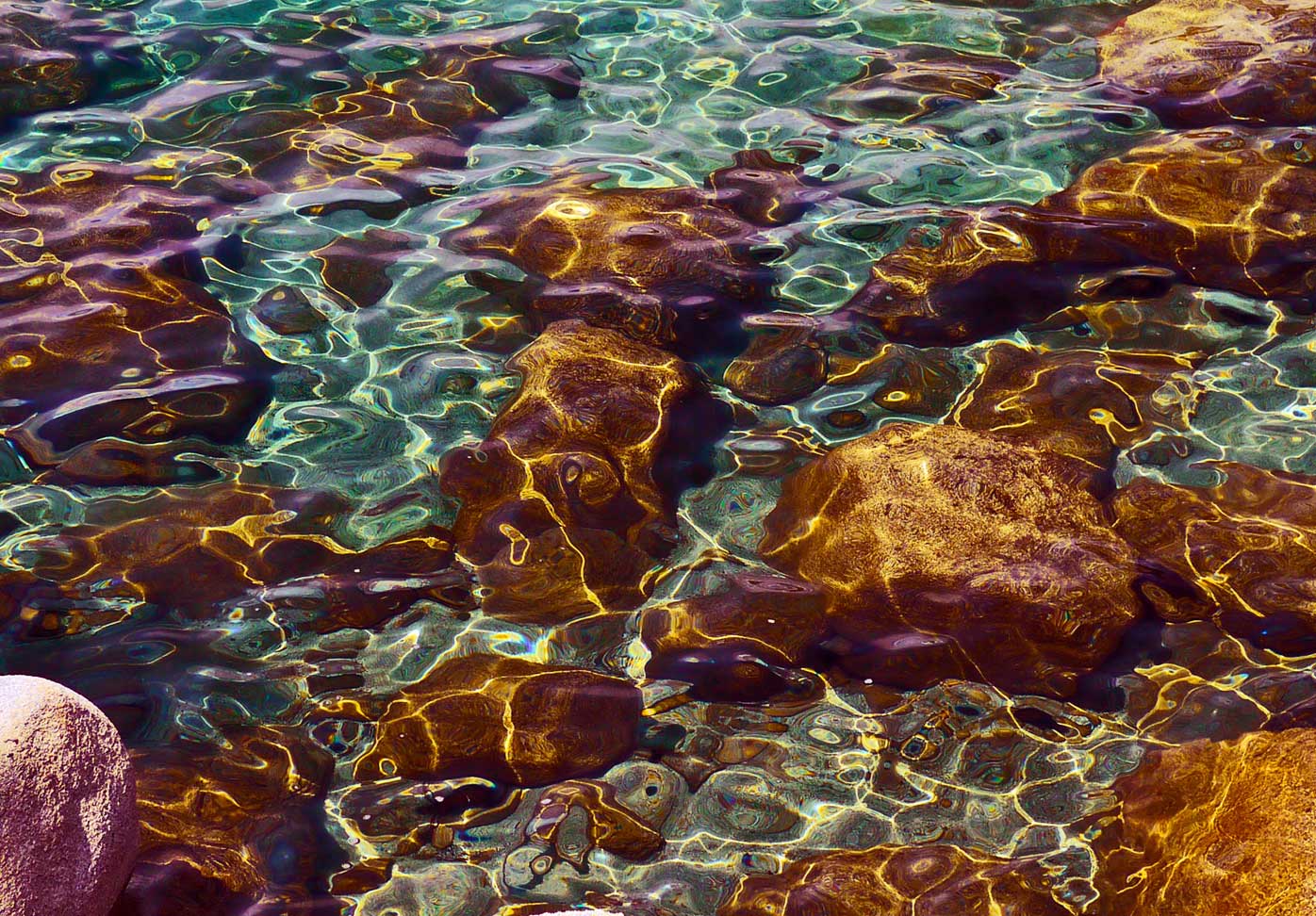 The hardest part of my process is the finale. It begins when the canvas I’m working begins to come together. Prior to that moment, it’s all intuitive, physical movement and dancing, sometimes (seemingly) without purpose. But then something happens. The piece moves from the unconscious realm of scribbles and splashes into consciousness and asks, ‘What is this?’
The hardest part of my process is the finale. It begins when the canvas I’m working begins to come together. Prior to that moment, it’s all intuitive, physical movement and dancing, sometimes (seemingly) without purpose. But then something happens. The piece moves from the unconscious realm of scribbles and splashes into consciousness and asks, ‘What is this?’
It’s not a sudden thing. It happens slowly over minutes or even hours. The piece starts to have an idea or a theme or a subject. It starts to mean something. And meaning is very conscious, very mental. It is the antithesis of the intuitive application of color and line. At that moment, all of the short circuiting I’ve done to my own tendency to make some THING on the canvas evaporates and some THING begins to call out from between the scribbles and the fields of color. . . . and it is time to answer, to resolve the painting.
When I get to this point, I usually take the canvas into the courtyard outside my studio, lean it against a wall and stand as far away as possible. I stare at it. Then I rotate it, four times. A good abstract piece ought to work pretty well no matter the orientation but deciding which end is up is a critical task in the resolution process. Deciding ‘up’ has a profound impact on meaning – and that’s what this phase is all about.
Once up is established, I mentally plan what I want to do to complete the piece. Are you hearing how different this is? Painting starts with no plan, no thought, no consciousness, just action application of pigment on canvas. But in the resolution phase, decisions are made (consciously), plans are created and step by step, the piece is finished. Deciding how to finish is usually a matter of subtracting – covering up or removing something that is not advancing the piece. It is rarely a matter of addition. If the piece is ready to be resolved, everything it needs is already there.
For example, if this work is trying to resolve as a landscape, maybe something with the suggestion of mountains and a lake, the worst thing to do would be to draw in those things, to add them to the piece. If it is trying to be a portrait, for God’s sake, don’t draw in the eyes or nose, or lips! Have the discipline and confidence to let the suggestion be enough. Instead, look for what interferes with that suggestion, look for what you might remove or paint over.
Resolution is most often a process of subtraction, rarely of addition.
That brings you to the final step: naming. This is a big deal. I go back and forth with it all the time. On the one side, the piece has made a suggestion to me of what it is. As an artist, a communicator, there is some rationale for communicating that suggestion in the title. However, if it is an abstract piece, by definition it is not a picture of a THING. And the suggestion I got as the artist may be very different from the suggestion a viewer might get. By naming the piece, I restrict and manipulate the viewer experience.
While the battle between these two points of view rages on, I have continued to name my pieces. But in my heart, I know it is a losing battle. I don’t believe it will be too long before everything is ‘Untitiled,’ or ‘Blue’ or ‘#4’ or something like that.
One final note of caution about this resolution phase. Sometimes you think you’ve resolved the piece, you are excited and proud. You pop the champagne and post the piece all over the Internet. Then you look at it two days later and realize you’re not finished! Happens all the time. Here’s my rule: I wait two days after resolving a piece before I proclaim it finished, before I share it all over the place. He who hesitates may be lost, but when it comes to resolution, a little pause is your friend.

Maria Volborth
9 Oct 2016I love this piece. It is very much what we had talked about in my” interview ” of you. Since this is the first time I read this and not knowing you before, it is interesting how we came to the same conclusion.